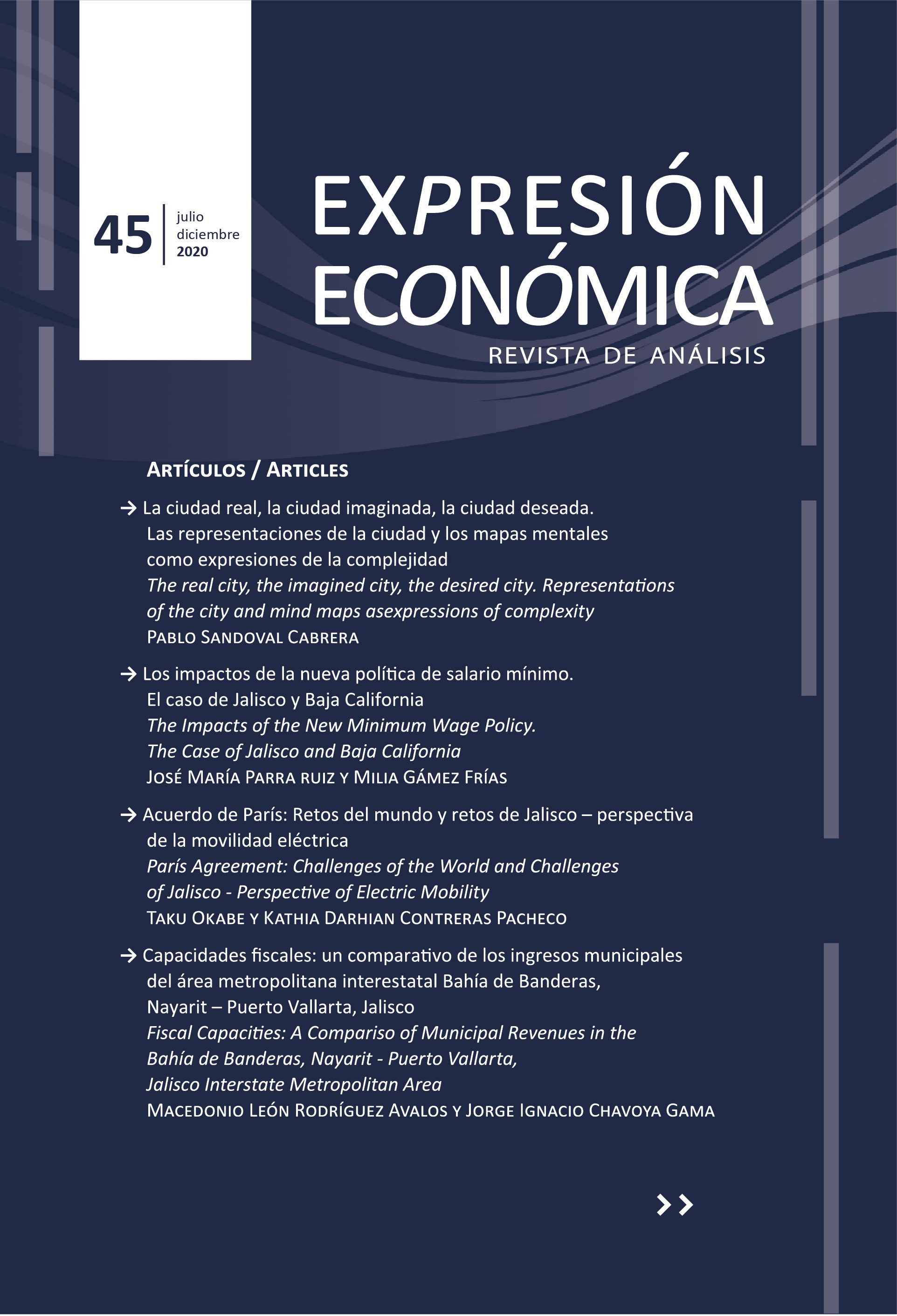The impacts of the New Minimum Wage Policy. The case of Jalisco and Baja California
DOI:
https://doi.org/10.32870/eera.vi45.1009Keywords:
minimum wage policy, occupation, salaried workforce, salaried employmentAbstract
In 2019, a new minimum wage policy is promoted that configures two salary regions: Free Zone of the Northern Border of Mexico and Rest of the country. An increase of 100% is authorized for the first region, and for the second 16.2%. Our objective is to analyze the impact that, in 2019, the differential increase in the minimum wage produces on the generation of new jobs by the salaried workforce (minimum wage target population) of Jalisco (emblematic entity of the rest of Mexico region) and of Baja California (entity of the region of the Free Zone of the Northern Border of Mexico) contrasting it with the national average in three levels: occupational structure, sector and economic activity, and by size of establishment, as well as by sex. The statistical evidence is processed from the national survey of occupation and employment (INEGI).
Downloads
Published
Issue
Section
License
Copyright (c) 2021 University of Guadalajara

This work is licensed under a Creative Commons Attribution-NonCommercial-NoDerivatives 4.0 International License.






